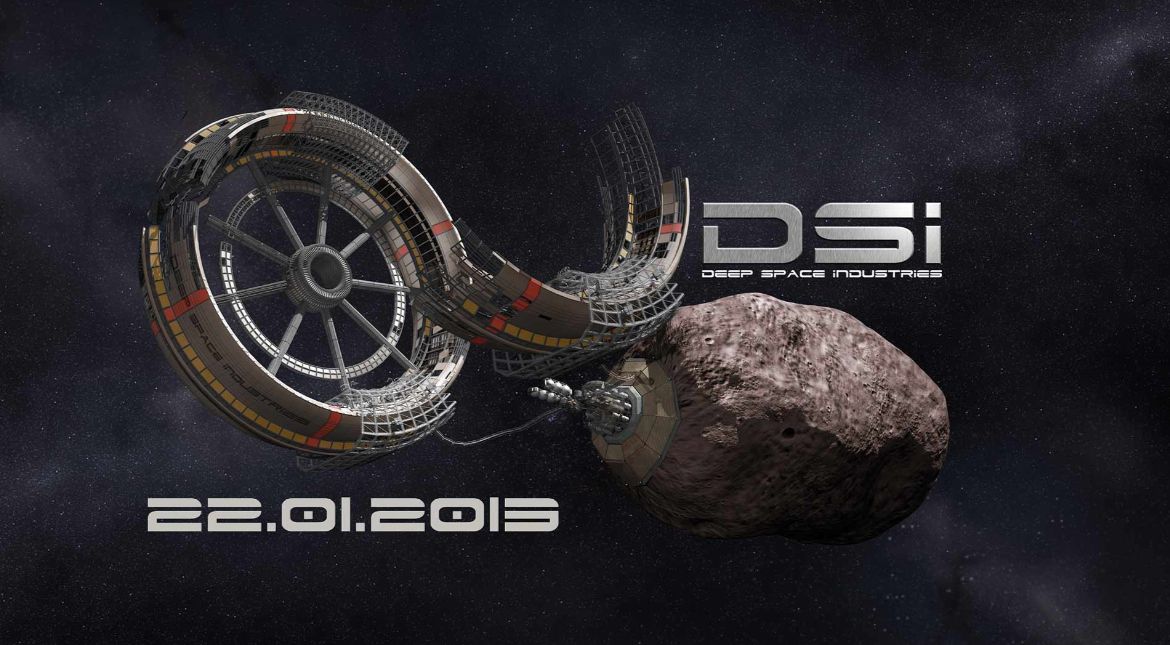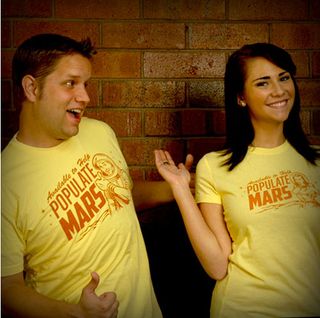
A new asteroid-mining company launched Tuesday with the goal of helping humanity expand across the solar system by tapping the vast riches of space rocks.
The new firm, called Deep Space Industries, Inc., announced today (Jan. 22) that it plans to launch a fleet of prospecting spacecraft in 2015, then begin harvesting metals and water from near-Earth asteroids within a decade or so. Such work could make it possible to build and refuel spacecraft far above our planet's surface, thus helping our species get a foothold in the final frontier.
"Using resources harvested in space is the only way to afford permanent space development," Deep Space CEO David Gump said in a statement. Deep Space Industries will hold a press conference today in Santa Monica, Calif., at 10 a.m. PST (1 p.m. EST/1800 GMT) to unveil more details of its bold mission plan; you can watch the webcast live here at SPACE.com.
"More than 900 new asteroids that pass near Earth are discovered every year," Gump explained. "They can be like the Iron Range of Minnesota was for the Detroit car industry last century — a key resource located near where it was needed. In this case, metals and fuel from asteroids can expand the in-space industries of this century. That is our strategy." [Deep Space Industries' Asteroid-Mining Vision in Photos]
Deep Space is the second company to jump into the asteroid-mining business. The first, the billionaire-backed firm Planetary Resources, had its own unveiling last April.

Prospecting spacecraft and asteroid sample-return
Deep Space will inspect potential mining targets with 55-pound (25 kilograms) spacecraft it calls Firefly, the first of which are targeted for launch in 2015.
Sign up for the Live Science daily newsletter now
Get the world’s most fascinating discoveries delivered straight to your inbox.
Fireflies will conduct asteroid reconnaissance on the cheap. They'll be made from low-cost "cubesat" components and will hitch a ride to space aboard rockets that also carry large communications satellites, Deep Space officials said.
"We can make amazing machines smaller, cheaper and faster than ever before," Deep Space chairman Rick Tumlinson said in a statement. "Imagine a production line of Fireflies, cocked and loaded and ready to fly out to examine any object that gets near the Earth."

The Firefly fleet's work will pave the way for 70-pound (32 kg) spacecraft called Dragonfly, which will blast off beginning in 2016. These Dragonflies will bring asteroid samples back to Earth during missions that last two to four years. Some samples will help the company determine mining targets, while others will probably be sold to researchers and collectors, officials said.
The public will get to fly along with both probes, whose activities will likely be funded in some measure by corporate sponsorship, Deep Space officials said.
"The public will participate in Firefly and Dragonfly missions via live feeds from Mission Control, online courses in asteroid mining sponsored by corporate marketers and other innovative ways to open the doors wide," Gump said. "The Google Lunar X Prize, Unilever and Red Bull each are spending tens of millions of dollars on space sponsorships, so the opportunity to sponsor a Firefly expedition into deep space will be enticing."
Building and refueling spacecraft off Earth
These activities are all precursors to Deep Space's ultimate goal, which is the harvesting and in-space utilization of asteroid resources.
The company intends to begin extracting metals and other building materials from space rocks within 10 years, officials said. These components will first be used to build communications satellites off-Earth, with the construction of space-based solar power stations coming later. Precious metals such as platinum will also be delivered to Earth for terrestrial use.
Deep Space's construction activities will be aided by a patent-pending 3D printer called the MicroGravity Foundry, officials said.
"The MicroGravity Foundry is the first 3D printer that creates high-density, high-strength metal components even in zero gravity," company co-founder and MicroGravity Foundry inventor Stephen Covey said in a statement. "Other metal 3D printers sinter powdered metal, which requires a gravity field and leaves a porous structure, or they use low-melting point metals with less strength."
Humans are visual creatures, but sight abilities range from "blind as a bat" to "sharp as an eagle" in the animal kingdom. Test yourself on what animals can really see.
Vision Quiz: What Can Animals See?

"We will only be visitors in space until we learn how to live off the land there," Tumlinson said. "This is the Deep Space mission — to find, harvest and process the resources of space to help save our civilization and support the expansion of humanity beyond the Earth — and doing so in a step-by-step manner that leverages off our space legacy to create an amazing and hopeful future for humanity."
Deep Space Industries' ambitions are similar to those of Planetary Resources, which also plans to tap asteroid metals and water to help open the solar system up to exploration and exploitation.
Planetary Resources could prove to be a tough competitor. It was founded by private-spaceflight pioneers Peter Diamandis and Eric Anderson, and its deep-pocketed investors include Google execs Larry Page and Eric Schmidt.
This story was provided by SPACE.com, a sister site to Live Science. Follow SPACE.com senior writer Mike Wall on Twitter @michaeldwall or SPACE.com @Spacedotcom. We're also on Facebook and Google+.













